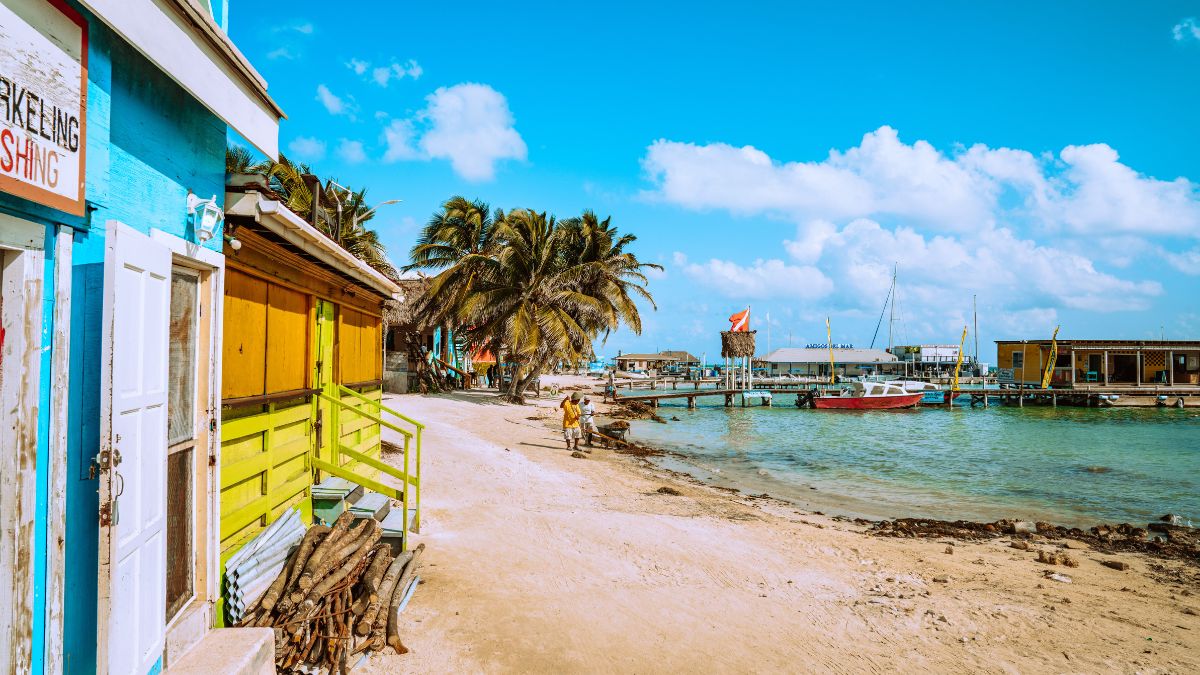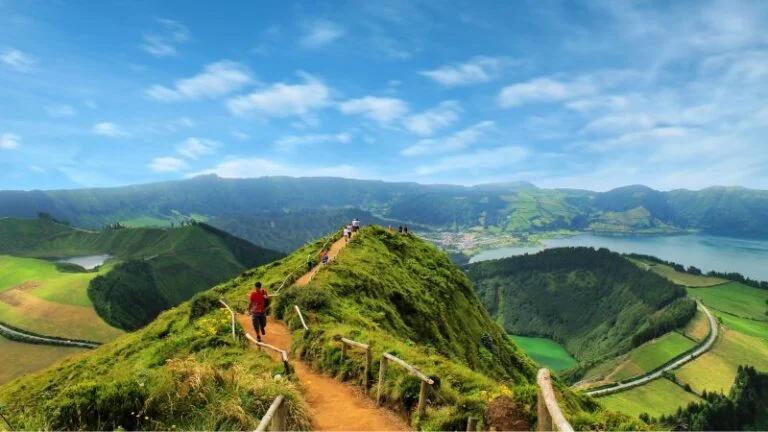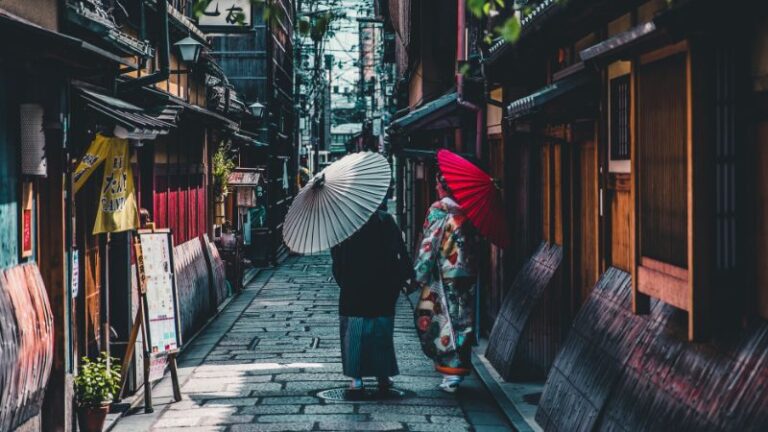Worst Time to Visit Belize: Understanding the Country’s Seasonal Hurdles

As participants in Amazon Associates and other programs, we earn from qualifying purchases. This comes at no additional cost to you. For more details, see our Affiliate Disclosure.
When it comes to traveling, timing can make all the difference between an unforgettable trip and a disappointing experience. In the case of Belize, a country renowned for its incredible biodiversity, majestic Mayan ruins, and stunning barrier reef, it’s no different. While this gem in Central America has its fair share of allure all year round, certain times and seasons present unique challenges that can dampen the charm of your adventure.
Understanding these seasonal hurdles is key to planning a trip that best suits your expectations and preferences. This article aims to guide you through the worst times to visit Belize, helping you make the most of your journey.
The Rainy Season: When Belize Gets Wet
Nestled between Mexico and Guatemala, Belize has a tropical climate that divides its weather into two distinct periods: the dry season and the rainy season. The latter, running from June to November, is a time when the country experiences frequent and heavy rainfall. During this time, the lush landscapes and jungicous rainforests of Belize become even more verdant – a spectacle to behold for nature enthusiasts. However, this beauty comes with a few drawbacks for the unsuspecting traveler.
The rainy season can lead to challenging conditions that might deter some visitors. First, the increased precipitation can make some rural and off-beaten paths muddy and difficult to traverse. For those looking to explore Belize’s famed archaeological sites or its picturesque hiking trails, this could pose a significant inconvenience. Additionally, certain roads may be closed or become dangerous due to flooding, particularly in low-lying areas.
Another thing to keep in mind is that while Belize’s marine life is vibrant and abundant, the increased runoff during the rainy season can muddy the waters, decreasing visibility for snorkeling and diving – two of Belize’s most popular activities.
Moreover, the rainy season coincides with the country’s hurricane season. While hurricanes don’t hit Belize every year, the potential for extreme weather conditions can create an additional layer of uncertainty for your travel plans.
Despite these challenges, the rainy season also has its perks. Accommodations are usually cheaper, tourist crowds are thinner, and the rainforest truly comes alive during this time. Nevertheless, it’s essential to understand these potential hurdles when planning a trip to Belize during the rainy season.
The Reality of Hurricane Season in Belize
The hurricane season in Belize runs from June to November, coinciding with the country’s rainy season. This period of the year is characterized by frequent storms and, on occasion, severe hurricanes. While it’s important to note that not every hurricane season results in catastrophic storms, the risk of encountering one during this period is significantly higher.
When a hurricane does strike, it can result in substantial disruption. Roads and airports may be temporarily closed, and power outages can be widespread. Essential services, such as healthcare facilities and supermarkets, may also be affected, leading to potential shortages of supplies. Moreover, the cleanup and rebuilding process can take weeks or even months, during which the affected areas may not be accessible to tourists.
In addition to land-based disruption, hurricanes also significantly impact marine activities. High winds and waves can make the sea conditions unsafe, preventing recreational activities such as snorkeling, diving, and boating. Hurricanes can also cause damage to the underwater ecosystems, affecting the vibrant coral reefs that are one of Belize’s main attractions.
Despite these risks, hurricanes are relatively infrequent events, and they can often be anticipated several days in advance thanks to modern meteorological techniques. Travel insurance that covers natural disasters is highly recommended during this season. Furthermore, many hotels and resorts in Belize have robust hurricane policies that provide for cancellations or rescheduling in the event of a hurricane.
Visiting Belize during hurricane season can still be a rewarding experience with lower costs and fewer tourists. However, understanding and preparing for the potential hurdles is crucial to ensure a successful trip.
Off-peak Travel: Pros and Cons
Off-peak travel, which refers to traveling during a destination’s low season, presents a mix of advantages and drawbacks. In Belize, the off-peak season largely coincides with the rainy and hurricane seasons, spanning from June to November.
Pros of Off-Peak Travel:
- Lower Costs: During off-peak season, airfares, accommodations, and local tours often come at a discounted rate. You may be able to stay in a more luxurious hotel or extend your trip with the money saved.
- Fewer Tourists: Traveling during off-peak means fewer crowds at popular tourist destinations and attractions. This allows for a more relaxed and personal experience, whether you’re diving in the barrier reef or exploring the ancient Mayan ruins.
- Richer Natural Experience: The rainy season brings a unique vibrancy to Belize’s natural landscapes. Rainforests bloom, rivers swell, and the country’s unique wildlife become more active, offering an unparalleled experience for nature lovers.
Cons of Off-Peak Travel:
- Weather Conditions: The primary drawback of off-peak travel is the weather. Frequent rain can make some outdoor activities less enjoyable, and in extreme cases, hurricanes can disrupt travel plans.
- Limited Accessibility: Some hiking trails, remote areas, and attractions may be less accessible or closed during the off-peak season due to heavy rains and potential flooding.
- Reduced Visibility for Water Activities: While marine life is abundant year-round, the increased rainfall and storm activity can decrease visibility for snorkeling and diving.
The decision to travel during off-peak season will depend on your tolerance for risk, your preferences, and the type of experiences you seek. Understanding the pros and cons will ensure that you make an informed choice for your Belize adventure.
Holiday Rush: The Impact on Tourism
While the rainy season and hurricane season can present challenges for those visiting Belize, another period to consider when planning your trip is the holiday rush, especially around Christmas and the New Year.
During these holiday periods, Belize experiences a significant surge in tourism. Not only do international travelers flock to the country to escape the cold winter in their home countries, but Belizeans living abroad also often return home to spend the holidays with their families. This influx of visitors can impact your travel experience in several ways.
Higher Prices: With the increased demand for flights, accommodations, and local tours, prices often spike during the holiday season. Budget-conscious travelers may find that their money doesn’t go as far during these periods.
Availability and Booking: Popular accommodations and tours can be booked out well in advance during the holiday season. This can limit your options and requires earlier planning to ensure you can stay and do what you desire.
Crowded Attractions: Belize’s popular tourist sites, such as its Mayan ruins, national parks, and diving spots, can become quite crowded during the holidays. This can impact the quality of your experience, especially if you prefer a quieter, more relaxed atmosphere.
Local Festivities: On the flip side, the holiday season brings a festive atmosphere to Belize, with numerous local events, parades, and festivals. This can provide a unique cultural experience and an opportunity to immerse yourself in Belizean traditions.
If you are planning to visit Belize during the holiday rush, early planning and booking are crucial. And while there are drawbacks to this busy period, many travelers find the vibrant holiday atmosphere and warm weather well worth the trade-offs.
Understanding the Seaweed Bloom Phenomenon
One seasonal phenomenon that has grown increasingly prevalent in Belize and throughout the Caribbean in recent years is the bloom of a type of seaweed known as Sargassum. These seaweed blooms, while natural, have been growing in size and frequency, affecting many beachfront locations in Belize.
What is Sargassum?
Sargassum is a type of brown algae that floats in massive mats on the ocean’s surface. When ocean currents bring these mats ashore, it’s known as a Sargassum bloom. While Sargassum plays an essential role in the marine ecosystem, providing habitat and food for a variety of marine life, excessive amounts can cause issues when it piles up on beaches.
Impact on Tourism:
- Aesthetics and Smell: Large Sargassum blooms can impact the pristine beauty of Belize’s beaches. The seaweed often forms thick mats along the shore, turning the clear, turquoise waters a murky brown. When it begins to decompose, Sargassum can also emit a strong, unpleasant odor.
- Water Activities: Sargassum blooms can affect water activities, such as swimming, snorkeling, and boating. The thick mats of seaweed can make it difficult to navigate through the water, and smaller pieces can reduce underwater visibility.
Timing and Management:
Sargassum blooms tend to peak between April and August, although this can vary based on ocean currents and temperatures. Belize’s local communities and resorts have implemented various strategies to manage the Sargassum situation, such as physical removal and the installation of barriers to keep the seaweed offshore.
While the Sargassum phenomenon can be a hurdle for some visitors, it’s important to note that it affects primarily beachfront areas and not inland attractions or the offshore islands (cayes), where the waters remain clear. Awareness and understanding of the issue can help you better plan your trip and manage expectations.
High Humidity: Navigating Belize’s Sweltering Summer
Belize, being a tropical destination, experiences high humidity throughout the year. However, it tends to peak during the summer months from May to September, coinciding with the country’s highest temperatures. For those unaccustomed to such conditions, the hot, sticky weather can be challenging, affecting comfort and potentially hindering some activities.
Impacts on Your Trip:
- Physical Discomfort: High humidity can lead to excessive sweating and difficulty in cooling down, which can be particularly uncomfortable when you’re out exploring. This might lead to quicker fatigue and the need for more frequent breaks.
- Dehydration and Heat-related Illnesses: The combination of high temperatures and humidity can put you at risk of dehydration and heat-related illnesses like heatstroke, especially during strenuous activities like hiking or exploring Mayan ruins.
- Impact on Outdoor Activities: High humidity can make outdoor activities feel more strenuous and uncomfortable, especially during the hottest parts of the day. This might require you to adjust your plans or schedule activities for cooler parts of the day.
Coping Strategies:
- Stay Hydrated: Regularly drink water to replace the fluids lost through sweating.
- Schedule Wisely: Plan strenuous activities for early in the morning or later in the evening when the sun isn’t as intense.
- Dress Appropriately: Lightweight, loose-fitting clothing made of breathable fabric can help you stay cool.
- Take Advantage of Water Activities: Belize’s beautiful waters provide a perfect respite from the heat. Plan for beach days, snorkeling, or diving sessions to beat the heat.
- Opt for Air-conditioned Accommodation: To ensure a comfortable night’s sleep, consider opting for accommodations with air conditioning.
By understanding Belize’s summer humidity and taking a few precautions, you can still enjoy all the amazing experiences the country has to offer, even during the sweltering summer months.
Wildlife Viewing Dilemmas: Seasonal Limitations
Belize is a treasure trove of biodiversity, making it a premier destination for wildlife enthusiasts. However, it’s important to understand that the presence and activity of various wildlife can fluctuate depending on the season. These variations can potentially impact the nature-based activities on your itinerary.
Bird Watching
Belize is home to over 600 species of birds, making it a paradise for bird watchers. However, the best time for birding is typically during the dry season from November to April. Many migratory bird species visit Belize during this period, further boosting the variety. Bird sightings can be less abundant during the rainy season due to some species migrating elsewhere.
Marine Life
Belize’s barrier reef, the largest in the Northern Hemisphere, is a hub of marine biodiversity. While marine life can be enjoyed year-round, certain activities are season-dependent. For example, Whale Shark sightings are most likely between March and June, coinciding with the spawning of certain fish species.
Mammals and Reptiles
Many of Belize’s mammals and reptiles, including jaguars, tapirs, and various snakes, can be challenging to spot year-round due to their elusive nature. However, they tend to be more active during the cooler hours of the day or at night, making guided nocturnal tours a popular option.
Insects and Mosquitoes
The rainy season brings with it an increase in mosquitoes and other insects, which could impact your comfort during outdoor activities. Remember to pack insect repellent and consider accommodations with screened windows or mosquito nets.
Coping Strategies:
- Flexible Planning: If specific wildlife viewing is a significant part of your itinerary, plan your visit during the appropriate seasons for the best chance of sightings.
- Local Guidance: Engage with local guides who have intimate knowledge of the area and wildlife. They can offer insights into the best times and places for wildlife viewing.
- Precautionary Measures: In insect-prone seasons, ensure you have adequate protection in the form of repellents, suitable clothing, and appropriate accommodation.
Understanding the seasonal changes in Belize’s wildlife behavior can help you plan a more fulfilling and enjoyable visit, ensuring you make the most out of your encounter with the country’s incredible biodiversity.
Coping with Local Health Risks: The Dengue and Malaria Factor
When traveling to tropical countries like Belize, it’s important to be aware of certain health risks, notably mosquito-borne diseases such as dengue fever and malaria. While these diseases are not widespread across the entire country and the risk to tourists is relatively low, it is still essential to take precautions, especially if you’re visiting rural areas or traveling during the rainy season when mosquito activity is higher.
Dengue Fever
Dengue fever is transmitted through the bite of an infected Aedes mosquito. Symptoms can range from mild flu-like symptoms to severe high fever, severe headache, joint and muscle pain, and rash. The majority of tourists who contract dengue recover fully, but in rare cases, it can develop into a more severe form known as dengue hemorrhagic fever.
Malaria
Malaria is transmitted through the bite of an infected Anopheles mosquito. Symptoms include fever, chills, and flu-like illness, and in severe cases, it can be fatal. While the risk of contracting malaria in Belize is relatively low and mostly confined to certain rural areas, it’s a risk to be aware of, especially if you plan on spending a lot of time outdoors or sleeping in unscreened accommodations.
Precautions:
- Avoid Mosquito Bites: The most effective way to prevent these diseases is to avoid mosquito bites. Wear long sleeves, long pants, and hats, use an effective insect repellent, and sleep in screened or air-conditioned rooms whenever possible.
- Travel Health Insurance: Ensure that your travel health insurance covers treatment for these diseases.
- Vaccination and Prophylaxis: There is no vaccine for dengue, but there are antimalarial drugs that can be taken as a preventative measure. Consult with a travel medicine specialist before your trip to discuss your specific situation and risk.
- Seek Medical Help: If you experience any symptoms of these diseases during or after your trip, seek medical attention immediately.
By understanding the risks and taking appropriate precautions, you can focus on enjoying the incredible experiences Belize has to offer, knowing you are well-prepared for your journey.
The Seasonal Seafood Restrictions: A Foodie’s Guide
Belize is a seafood lover’s paradise, boasting a vast array of fresh catches from the Caribbean Sea. However, the country also has strict regulations to preserve its marine biodiversity and ensure the sustainability of its fisheries. Understanding Belize’s seasonal seafood restrictions will help foodie travelers make responsible dining choices while indulging in the country’s delicious culinary offerings.
Conch
Belize’s Queen Conch is a delicacy, often served in stews, fritters, and ceviche. However, the conch season typically closes from July 1 to September 30 to allow the species to reproduce.
Lobster
Belizean lobster is another sought-after delicacy. The lobster season usually closes from February 15 to June 14. During this period, it is illegal to catch, buy, or serve lobster.
Nassau Grouper
Belize has implemented a closed season for Nassau Grouper, a popular fish in the region, to protect the species during its spawning period. The closed season typically runs from December 1 to March 31.
Sea Cucumber
The season for sea cucumber, often used in Asian cuisines and increasingly popular worldwide, is usually very short. The dates can vary greatly from year to year based on population studies, and there are often strict quotas.
Responsible Choices:
- Be Informed: Before ordering, ask about the source of the seafood and whether it’s currently in season.
- Diversify Your Choices: Belize has a vast array of seafood options. Try different types of fish and shellfish to reduce pressure on specific species.
- Respect Local Laws: Belize’s seafood regulations are there for a reason. By following them, you’re helping to preserve the country’s marine biodiversity for generations to come.
Belize’s commitment to sustainability is evident in its seafood regulations. By understanding and respecting these seasonal restrictions, you can enjoy the country’s diverse culinary offerings while supporting sustainable tourism practices.
Final Thoughts: Weighing the Pros and Cons of Off-Peak Travel to Belize
Choosing the best time to visit Belize largely depends on your individual preferences, tolerance for certain weather conditions, and the activities you are interested in. Off-peak travel, which coincides with the rainy season, hurricane season, and periods of high heat and humidity, presents its unique set of challenges. Yet, it also offers several distinct advantages that might appeal to certain travelers.
The Pros:
- Reduced Costs: Off-peak travel can be significantly more affordable, with discounted airfares, accommodations, and tours.
- Less Crowded: Traveling during off-peak season means fewer tourists, allowing for a more relaxed and personal experience of the country’s attractions.
- Richer Natural Experiences: The rainy season sees the natural landscapes of Belize burst into life, offering an unparalleled experience for nature lovers.
The Cons:
- Unpredictable Weather: The rainy season can disrupt travel plans, while the hot and humid conditions may be uncomfortable for some.
- Limited Access to Certain Attractions: Heavy rains and potential flooding can limit the accessibility of some areas and attractions.
- Seasonal Seafood Restrictions: For food lovers, certain popular seafood may be unavailable due to seasonal restrictions aimed at promoting sustainability.
Overall, it’s crucial to remember that Belize has much to offer all year round. From the vibrancy of its cities to the beauty of its natural landscapes, from its rich Mayan history to its diverse culinary offerings, there is always something to explore. So, whether you choose to visit Belize during the peak season or brave the off-peak months, prepare well, stay flexible, and make the most of your Belizean adventure.






